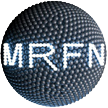Two Nikon TE2000 optical microscopes are currently in use by MRSEC members for materials characterization and dynamic motors experiments. Both are configured with fluorescence and differential interference contrast capabilities and connected to CCD cameras and monitors. One microscope, housed in Hallowell building, is used extensively for biological motor experiments and is being outfitted with an optical tweezer for measuring and manipulating motor proteins and nanoparticles.


